Don't wanna be here? Send us removal request.
Photo

Aradia megido at the beach, crawling onto a dumpster
8 notes
·
View notes
Photo
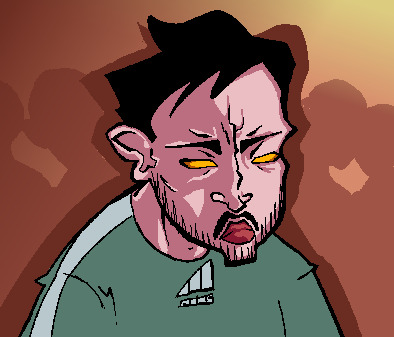
kind of comic booky
1 note
·
View note
Photo

“And even her friend the hippyman With his tarot cards to play Drowning in his sea of words Why he never has much to say.“
7 notes
·
View notes
Photo
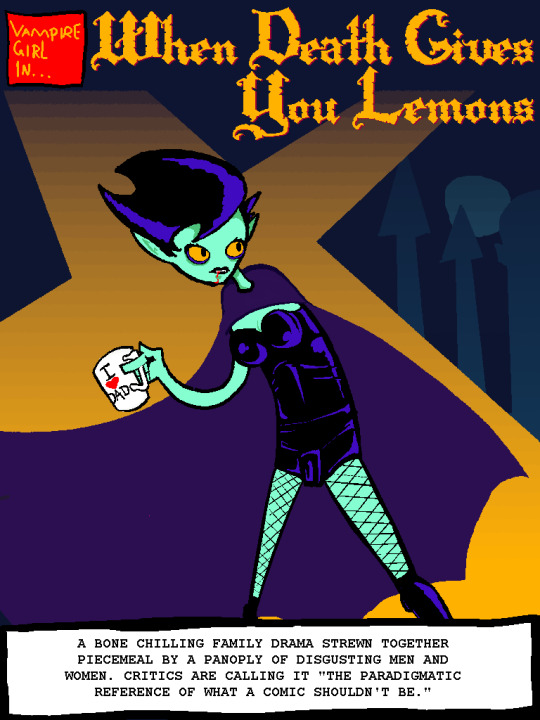





A stupid comic made for a game on the MSPFA discord server. Made by me, Baqly Shimada JoyTheBoy, Kenny Endater AustrianArchduke and Meatman.
0 notes
Photo
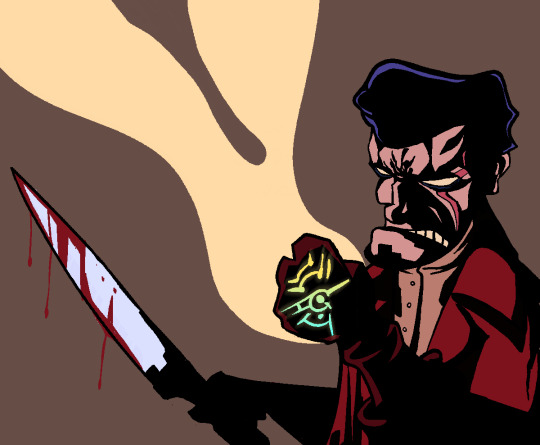
the duadly assassin
16 notes
·
View notes
Photo

some funny faces of a cartoon vampire girl.
0 notes
Photo

59 notes
·
View notes
Photo
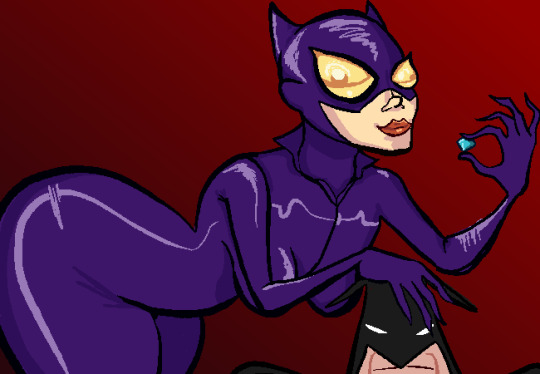
6 notes
·
View notes
Photo

Hup! Hup! Hup hup hup!
#siouxsie and the banshees#arabian knights#juju#this is a very silly drawing#but it looked really funky so im posting it here#art
5 notes
·
View notes
Photo

"you can never go wrong with a woman with bolts in her hair “
-Radical Dude 42
3 notes
·
View notes
Photo
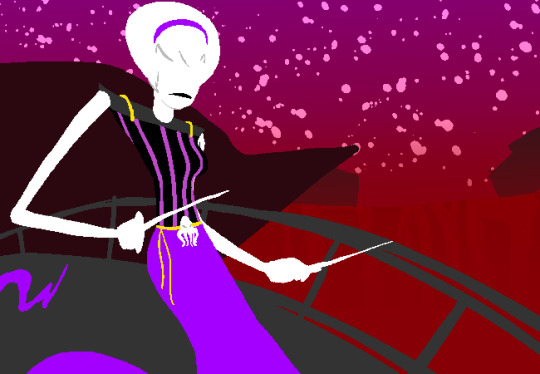
Mom Lalonde, Rose edition.
#homestuck#rose lalonde#mom lalonde#milf#i dig roses velvet dress#it was really the only outfit that suit b2 moms silhouette#art
2 notes
·
View notes
Photo

I could love a woman with those three colours; hair like a raven, body like snow and a poncho like blood.
#lydia deetz#winona ryder#beetlejuice#betelgeuse#michael keaton#art#i really like the beetlejuice movie but the cartoon show really is dogshit#people only remember it for the cute girl#including me
3 notes
·
View notes
Text
American McGee’s Alice
I’d be underselling it if I said the visage of a morose, brunette Alice Liddel stained in blood and wielding a knife wasn’t something of a creature comfort for me. It brings me back to a time of unabashed edge and calling yourself -*twisted*- on MySpace. I never played either of American McGee’s Alice games when I was younger, but Madness Returns always intrigued me. A 3D platformer that seemed to conform to my every niche. It wasn’t until last year when I actually picked it up; and with it, the first game.

I don’t want to dwell too much in the history of the game, much less it’s titular auteur. I’ve watched a few reviews of the series in preparation and, much to my interest, many of them go into lengthy detail into the admittedly tragic life of American McGee. His mother was criminally neglectful in his early life, and in his later life he would come to bare the kidnapping and certain death of his sister, along with the cruel taunting that ensued by what we only can assume was his sister’s captor. It’s no wonder then, that the very first game he helmed featured such dark themes. Themes of survivor’s guilt and the utter destruction and reconstruction of a mind proceeding tragedy.
Here’s the short of it. The game takes place after Lewis Carroll’s novels and functions as a sequel more or less. Sound familiar? That’s the premise of Tim Burton’s live-action adaptation of Alice in Wonderland, but this time with a much less confusing execution. There’s no arranged marriages or trading companies for Alice to inherit. Instead, she’s been institutionalised in the wake of a house-fire of which she was the only survivor. This entire premise is exposited during the intro cinematic, so if you weren’t paying attention then too bad. These events are barely revisited again. This might sound like a critique on my part, but I appreciate this threadbare style of storytelling. The rest of what you need to know is laid out for you subtly, it paints a story for you through the subtext of the environment. Yes, you’re in a weird school, then a garden where even the ants tower over you, then a smothering claustrophobic cave filled with water. These seem innocuous enough (with maybe the exception of the Skool) but keep in mind, these events take place inside the players mind!!
Apparently, the manual which shipped with the game included a journal of Alice’s Ward as he tried his best to treat her mental state. I didn’t read this, partly because I don’t actually own the manual, but mostly because I think this is bullshit. Everything you need to know about Alice’s emotional journey is within the game itself, and a “real world” account only exists to muddle the game’s themes.
You could draw parallels to the player’s conquering of the game, the stages and the enemies, as Alice conquering her own trauma and retaking control of her own mind. Your arsenal grows as Alice discovers more tools with which to resolve the blame she assigns herself. Obviously this is all conjecture, what sort of game would it be without enemies and weapons and etc., but that’s art for you. It’s not entirely unfounded, of course. The Jabberwock fight is markedly a poignant fight for Alice, and the themes are much more opaque. The Jabberwock openly mocks Alice for letting her family die in a fire, and its death certainly represents a forgiveness she allows herself. It’s no mistake that this fight takes place in the Land of Fire and Brimstone. This is a running theme in American McGee’s Alice series, of bosses representing some part of Alice’s struggle. The Mad Hatter owns an asylum and dedicates his life to hurting his infirms. The Red Queen represents a fear of the real world and a complacency in fantasy. She urges Alice to stay where she is, doomed to face the consequences of losing herself to her own escapism. The Queen’s face peels back to reveal to Alice who she’s really speaking to, herself. And that’s an interesting thing to keep in mind in a story like this, essentially every dialogue Alice has is in fact a monologue.
If there’s one thing I’ve always admired in these late 90s-2000 PC games, it’s the amazing moods they always manage to create. They suck me in like one of those sucky things in a pool would suck at your leg. Most dev teams couldn’t or wouldn’t hire some writer to hi-jack their video game, so to compensate artists could inject the project with an incredible atmosphere you’d be hard pressed to find in any modern game. This game manages both and passes with flying colours.
The dialogue and tone, beyond the edge and grit, is unrelentingly Wonderland, short just of the copious Oxford educated maths jokes. Alice speaks with a sophisticated wit and approaches her own strange world with a seemingly innocent curiosity. Despite her broken psyche in the waking world, she’s comfortable in her fantasy, no matter how depraved it’s gotten. I’m sure I’m not the only one who can relate with this idea.
The majority of the locales are viciously memorable. The source material demands imagination and the game, with the exception of a few stages, certainly delivers. The first real location is the Skool, looking like a miniature from the set of Nightmare Before Christmas. The floorboards giving way to a hypnotizing infinite, where titanic stacks of books threaten to topple over and phantoms infiltrate the walls. The battlefield beneath the grass where insect troopers threaten Alice with bayoneted rifles, and the only refuge from the battle is down below the earth, in the treacherous ice caves. The Hatter’s Domain with it’s daunting amount of mirrors and ticking clocks, where enemies can be waiting around each corner, behind each wall. The Pale Realm, with it’s perplexing geometry and chequered stylings, where Alice must traverse as a Rook, Knight or Bishop. It’s just all so endearing.

The gameplay might be the one aspect of the game I’m still not entirely sold on. Unlike their first-person counterparts, third-person games developed on the id-Tech engine have aged like bread. See also: Heretic 2. The game requires a lock-on mechanic for you to ever hope to hit your attacks and it features a jumping reticle of all thing. Stand close enough to a platform and you’ll see a spinning imprint of Alice’s boots projected onto it. They seem like very rudamentary solutions to issues that console devs strived in solving. This game was released four years after Crash Bandicoot and Mario 64, and two years after Banjo Kazooie and Sonic Adventure. Even for its time, the gameplay was awkward.
Alice in Wonderland is one of those rare stories whose mythos inspires creators more directly than even what you might consider the most influential of art. Storytellers make allusions to Carroll’s work as much as they might Greek legend, which is a monumental claim to fame. The Jabberwock is referenced in the same tone as Hercules’ Hydra, the White Rabbit which leads Alice down it’s spiraling gateway has been used to symbolise psychedelics, More recently, Arkane’s Prey has borrowed an Alice title for it’s iconic in-universe Looking-Glass technology. McGee has made his very own impact in this legacy, instilling a grit and twistedness to the world which can still be seen today. I doubt that Tim Burton would have wound up directing a Wonderland movie without American McGee’s input.
I do hope McGee gets another shot at game direction. He’s a talented level designer, his life has been harsh and his Alice series holds a special, extremely biased place in my heart. That said, maybe he could give the series a break, maybe work on that Oz idea he had. Madness Returns left a bittersweet taste in my mouth, and his track record of video game direction slants slightly more to bad than good. I mean, google Bad Day LA.
14 notes
·
View notes